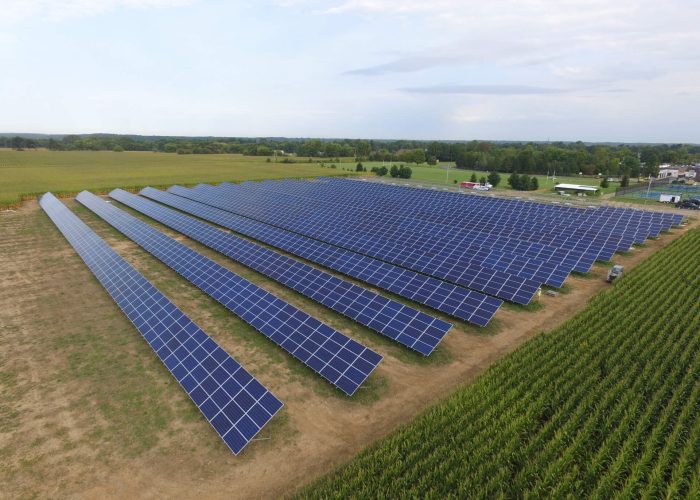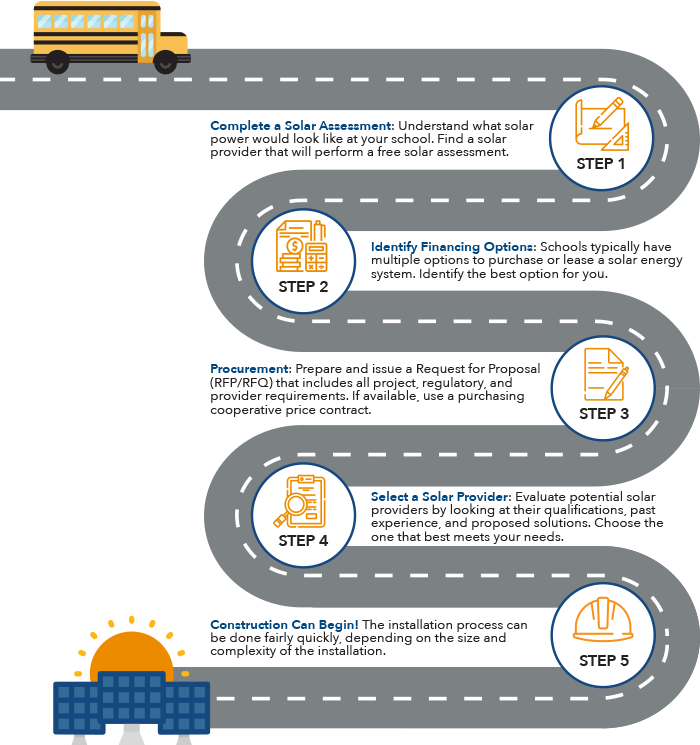Getting Started with Solar for Schools
September 17, 2020

Solar power has many benefits including energy cost savings, educational opportunities for students, and contributing toward a greener community. Learn how your school can get started on the road to a brighter future with solar.
Solar power is a proven solution for schools looking to significantly reduce energy costs while decreasing their carbon footprint. But how do you start the process of installing solar power at your school? We’ve broken it down into five simple steps.

The first step is to understand what solar power would look like at your school. Find an experienced solar provider that will perform a free solar assessment. The assessment should include a review of your annual energy consumption and costs, a preliminary solar design, and an analysis of the potential costs and savings of a solar project. An experienced provider will also account for any local or utilityrelated considerations that impact the overall financial performance of the project.
Schools typically have multiple ways to pay for or lease solar energy systems. This may include
bond issuances, debt certificates, or tax-exempt lease purchase agreements. Depending on the location and system, local rebates and incentives may also exist to offset the cost of the installation. An experienced solar provider or your financial advisor should be able to assist in understanding your options.
Working with your School Board, prepare and issue a Request for Proposal (RFP) or Request for
Qualifications (RFQ) as necessary to solicit responses from qualified solar providers. The RFP/RFQ shall specify the requirements for the proposal response and include relevant information on the project and qualification requirements. In some jurisdictions, Schools may be able to select a provider through a Purchasing Cooperative or State Procurement Program, in lieu of issuing an RFP or RFQ. Qualified solar providers will be able to consult and guide you on the procurement process and options.
Evaluate the proposal responses and formally select the qualified provider that best meets your needs. When evaluating providers, carefully consider their qualifications, past experience, and proposed solutions. The solar system size, quality of equipment, and project cost can often vary considerably among providers, so be cautious in your evaluations and choose a provider you can trust. The provider may also be able to assist with other energy savings solutions such as lighting, HVAC, or building controls to provide even greater value.
The installation process can typically be done fairly quickly once all equipment is on site, depending on the size and complexity of the system. But the timing to complete design work, obtain interconnection approval, and secure necessary permits can often vary considerably depending on the utility and site location. The construction process should be supervised by a Project Manager experienced with solar installations. Qualified providers will know how to properly commission the system and monitor its performance to ensure the system performs as expected.
Moving forward with solar energy is a big decision and the true financial benefits are seen over time. Solar panels typically have a 25-year power production warranty and an average lifespan of over 40 years. An investment in a solar power system can save millions of dollars in energy costs over the long run. In addition to the educational and environmental benefits, it’s fun to imagine what your school could do with the extra money from the energy savings to put into the classroom or elsewhere. To find out, let’s go solar!
